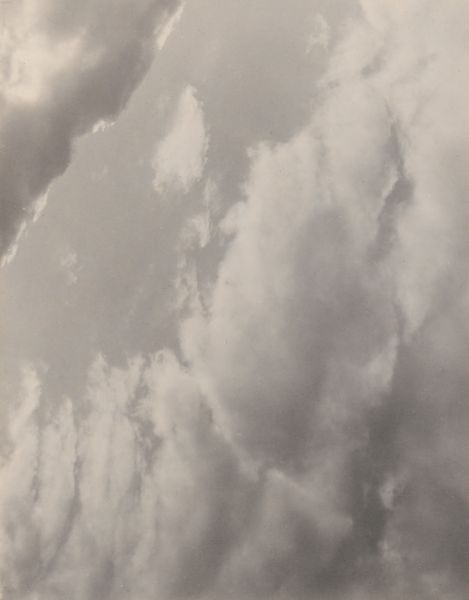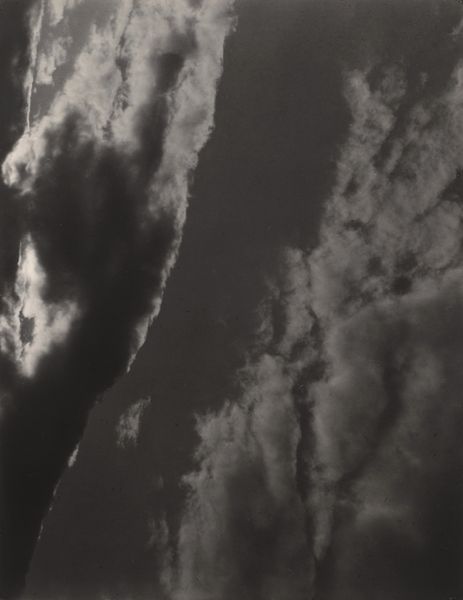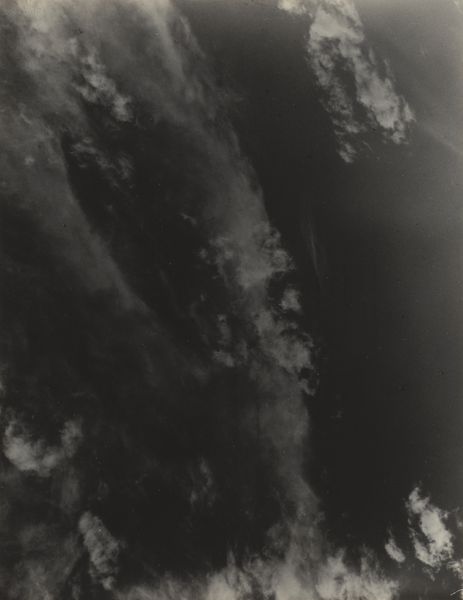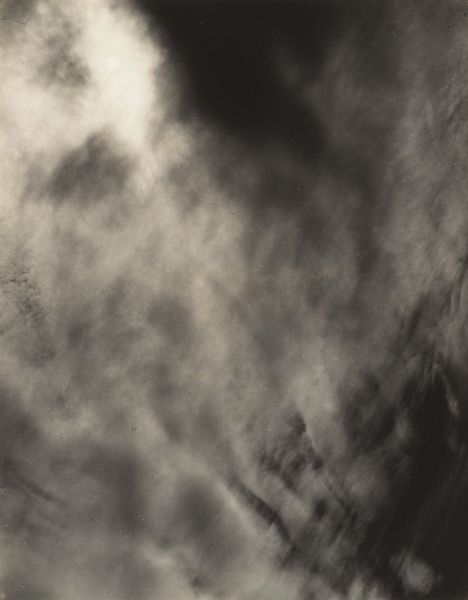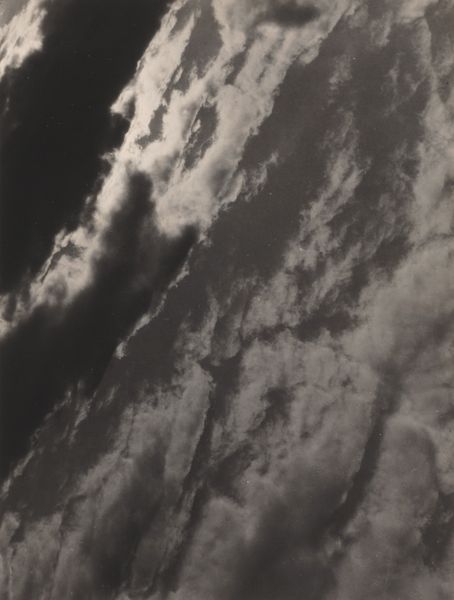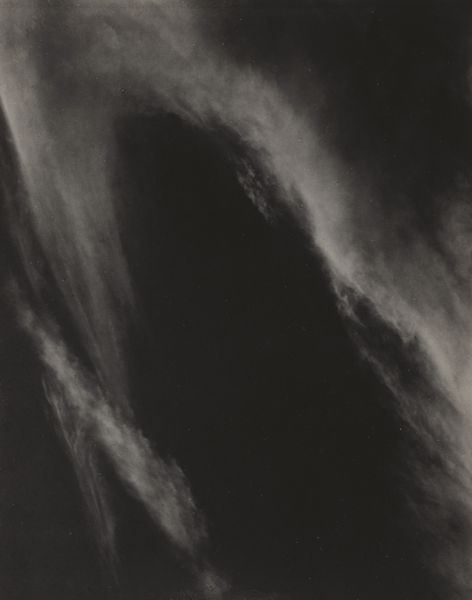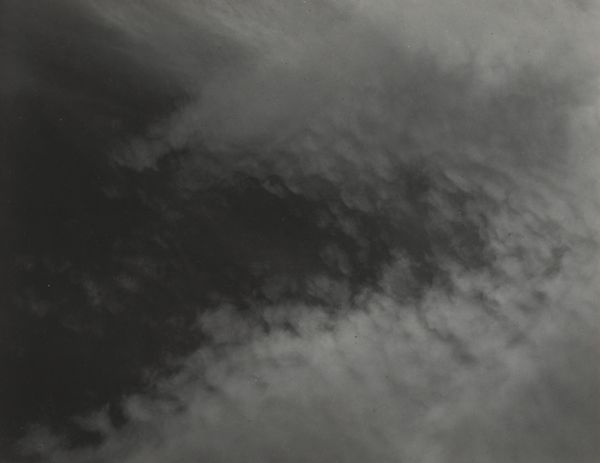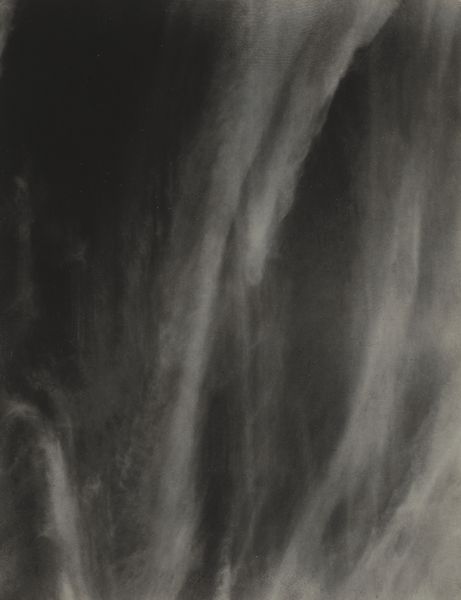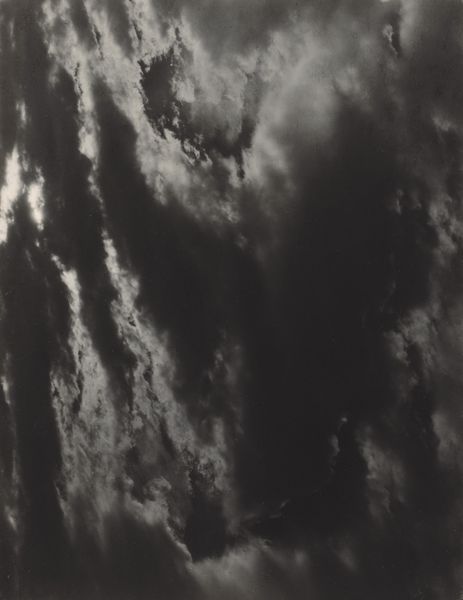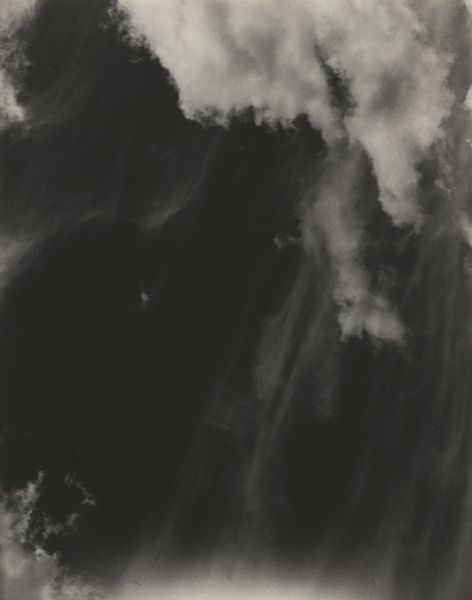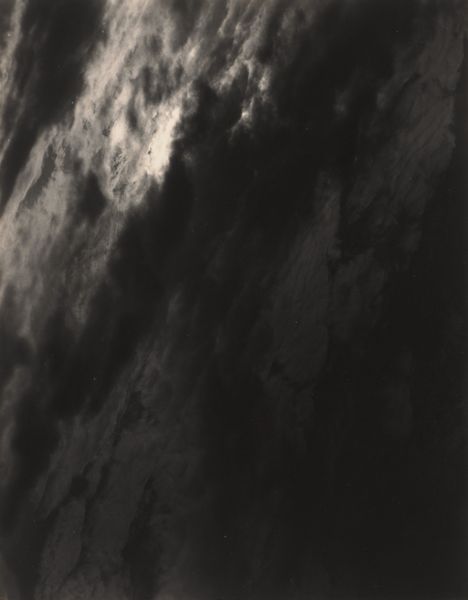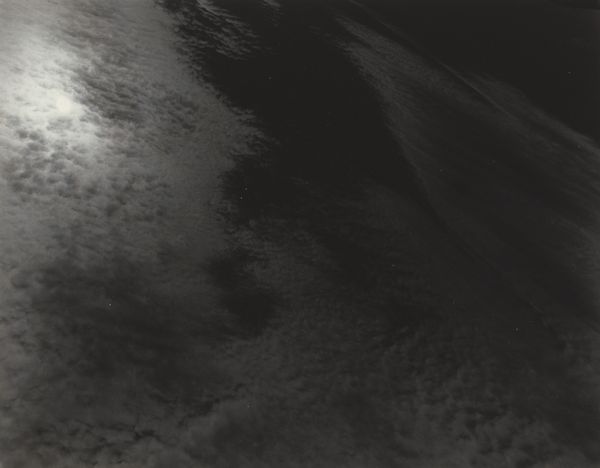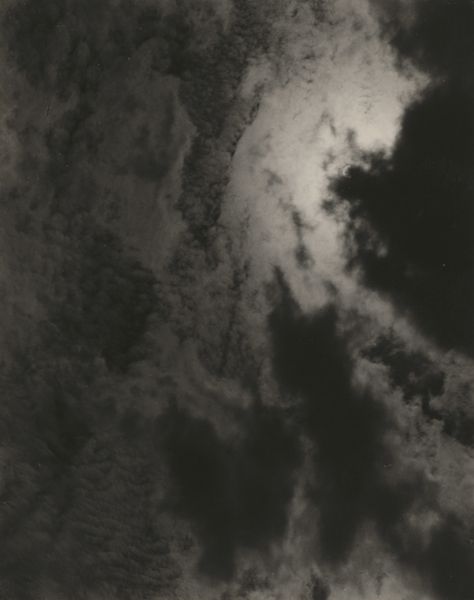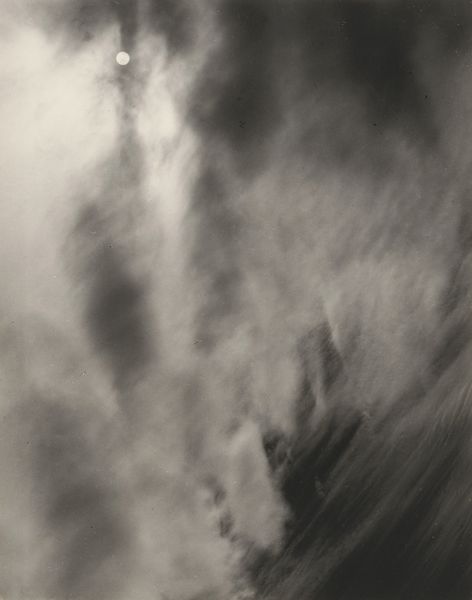
photography
#
pictorialism
#
landscape
#
photography
#
geometric
#
monochrome photography
#
abstraction
#
monochrome
Dimensions: sheet (trimmed to image): 11.8 x 8.9 cm (4 5/8 x 3 1/2 in.) mount: 34.8 x 27.5 cm (13 11/16 x 10 13/16 in.)
Copyright: National Gallery of Art: CC0 1.0
Curator: Standing before us is Alfred Stieglitz’s “Equivalent,” a photograph taken in 1931. What strikes you immediately about this monochrome piece? Editor: A sense of ethereal vastness, of something elemental. The shades of gray create a dramatic, almost turbulent feeling. The stark contrast hints at powerful, underlying tensions, which can be symbolic of the socio-political unrest during that era. Curator: It’s remarkable how Stieglitz captures such depth and emotion through what is essentially an arrangement of clouds. Stieglitz began his Equivalent series to move away from a literal approach to photography, searching for the emotional truth that nature could express, not simply the photographic object, an argument about photography's claim to abstraction like painting. Editor: That speaks to its power. The clouds become signifiers, charged with psychological and historical resonance. Thinking of the economic devastation after the Great Depression, these floating entities suggest precariousness but also the potential for transformation. Curator: Absolutely, there’s a strong symbolic resonance. Stieglitz saw these cloud formations as equivalents of his own inner states, believing that they could evoke emotions in the viewer mirroring his own—in essence, a deeply subjective image becomes universal through the symbolic weight of these billowing forms. There’s also something timeless here: light and shadow and vast skies will always carry metaphorical impact. Editor: In a time that discounted individual emotions amidst collective turmoil, these symbolic expressions became politically urgent—a claim on the power of inward life that resists any singular historical read, resisting those forces aimed at homogenization. Curator: Stieglitz’s pictorialist sensibilities are evident. What’s particularly striking to me is how he uses light and shadow to generate that atmosphere. Editor: This photograph exemplifies how seemingly abstract imagery can operate as an act of quiet defiance. The use of symbol transforms, allowing space to feel and reflect amidst times of collective reckoning. Curator: So, while seeming ethereal, this image also is very grounded in our own human need to connect emotion and representation. Editor: Yes, a beautiful and historically charged meditation.
Comments
No comments
Be the first to comment and join the conversation on the ultimate creative platform.
